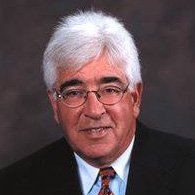Avoiding the Pitfalls of Dental Partnership Transitions – Owner Financing
May 1, 2012
 Many years ago, it was common practice for the selling doctor to finance the purchase price that the associate had agreed to pay for an equity position in the dental practice. The selling doctor would charge a competitive interest rate and typically the note would be for a 5 to 10 year time period. With this approach, the seller receives the purchase price in little pieces rather than the full amount. I would much rather see the seller get the full price all at once. You can do a lot of neat tax strategies with retirement plans. And there is certainly a time value for money invested. I am strongly opposed to owner financing for the following reasons.
Many years ago, it was common practice for the selling doctor to finance the purchase price that the associate had agreed to pay for an equity position in the dental practice. The selling doctor would charge a competitive interest rate and typically the note would be for a 5 to 10 year time period. With this approach, the seller receives the purchase price in little pieces rather than the full amount. I would much rather see the seller get the full price all at once. You can do a lot of neat tax strategies with retirement plans. And there is certainly a time value for money invested. I am strongly opposed to owner financing for the following reasons.
There is no need. Nowadays there are many banks and lending institutions that have programs specifically tailored for dental practice acquisitions. I am constantly amazed at how easy it is for a young dentist–even with significant education debt–to borrow 100% of the money needed strictly on a signature. No collateral. Even at the depth of the financial mortgage crisis in 2008 in 2009, dentists were still able to get their financing. This was in stark contrast to many successful small business owners in the same community who were not able to secure loans.
Practice values have increased so buyers often need more time to amortize the purchase price in order to make the purchase affordable. I would not want the selling doctor to hold paper for that long. That is what banks are for.
The biggest negative to the seller is the risk involved by acting as the bank. It is much easier for a disgruntled junior partner to walk away from this kind of owner financing. Sure–you have a legal agreement and you could sue for damages–but often times it just is not worth the aggravation. If in fact after a few years the junior leaves, he or she loses whatever money they paid in, and the selling doctor regains 100% ownership of the practice. But now the seller is essentially back to square one. The security of selling the practice has vanished and now you have to get back to the hard work of finding another buyer. I have witnessed this unfortunate situation on a number of occasions.
If instead the purchase had been bank financed, it is much more difficult for the buyer to walk away from the obligation. Remember that the bank has already paid the seller the entire purchase price. This buyer would now certainly risk personal bankruptcy and certainly severe damage to their credit score.
Owner financing is also a negative for the buyer who would not be able to fully share in the revenue stream of hygienists and other dental providers such as itinerant specialists or other associate dentists. As I have mentioned, when the selling doctor provides financing, he does not receive the full purchase price–just one year at a time. So the buyer only becomes “vested” in the other profit centers of the practice based on ownership. As an example, with a 10 year owner financed situation, the buyer pays 10% in the first year but only receives 10% of the profit centers. After year two, 20% and so on. The increased sharing from profit centers only occurs as the acquisition cost is paid off.
Make the buy in a win/win situation for both parties. Don’t even consider owner financing.
No Comments
No comments yet.
RSS feed for comments on this post.
Sorry, the comment form is closed at this time.

